Patagonia Yulex Regulator Wetsuit Review

The new Yulex Regulator series is Patagonia’s latest iteration of premium, eco-friendly wetsuits, coming a long way since the debut of the world’s first neoprene-free line in 2016. Over the years, Patagonia has made subtle tweaks to its suit design and functionality, but none more drastic than the improvements for the new 2023/2024 Regulator models. There are a lot of changes to dive into, from the new exterior fabric and interior lining to intentional seam placement and even a nod to surfing legend Gerry Lopez.
For the past few months, I tested the new R3 Yulex Regulator Hooded Chest Zip in various surf conditions here in Oregon. The results are quite impressive when comparing it to Patagonia’s previous suits and competitor brands I currently own. That said, let’s take a closer look at the updates and performance of the Regulator wetsuit.
“The updated features are the new baseline for Patagonia moving forward, and it is easy to see why. Toss in the ironclad warranty, and this suit rivals anything on the market.”
Highlights and Features
- Most eco-friendly suit available
- Ironclad Guarantee
- Comfortable and stretchy
- Does not leak or flush
- Easier entry and more flexible than previous models
- Gerry Lopez camo lining not only looks cool, it feels dry the moment you take it off

Patagonia Men’s Wetsuits
- Patagonia R1 Yulex Regulator 3/2.5 Back Zip Wetsuit - $479
- Patagonia R1 Yulex Regulator 3/2.5 Chest Zip Wetsuit - $479
- Patagonia R2 Yulex Regulator 3.5/3 Back Zip Wetsuit - $509
- Patagonia R2 Yulex Regulator 3.5/3 Chest Zip Wetsuit - $509
- Patagonia R2 Yulex Regulator 3.5/3 Hooded Chest Zip Wetsuit - $539
- Patagonia R3 Yulex Regulator 4.5/3.5 Back Zip Wetsuit - $539
- Patagonia R3 Yulex Regulator 4.5/3.5 Chest Zip Wetsuit - $539
- Patagonia R3 Yulex Regulator 4.5/3.5 Hooded Chest Zip Wetsuit - $579
- Patagonia R4 Yulex Regulator 5.5/4 Hooded Chest Zip Wetsuit - $609
- Patagonia R5 Yulex Regulator 6.5/5 Hooded Chest Zip Wetsuit - $639
Patagonia Women’s Wetsuits
Patagonia Regulator Wetsuit
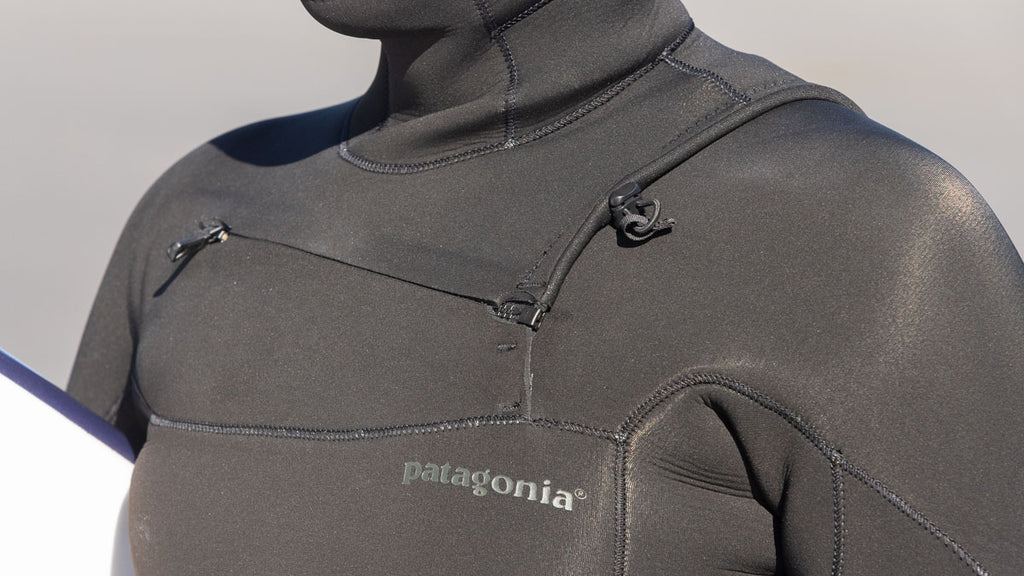
Neoprene and Liners
Previous Patagonia suits tended to feel stiff at first and less stretchy compared to O’ther (see what I did there?) brands in the business. Patagonia replaced the recycled polyester fabric with stretchier recycled nylon to mitigate this. The difference in the entry point and softer feel is noticeably better. Sandwiched between the fabric is Patagonia's special blend of Yulex natural rubber. Compared to traditional neoprene in terms of warmth, they are arguably equals.
However, when considering the environmental impact on the planet, Yulex takes the cake. The rubber is certified by the Forest Stewardship Council, or FSC (not to be confused with FCS), for its sustainable harvesting practices. The process in which the rubber is derived uses roughly 80% less emissions when compared to conventional nonrenewable neoprene.
The internal liner is solution-dyed, using significantly less water than conventional dyeing and roughly 96% less emissions. For added warmth and cool vibes, the suit's interior around the torso and hood is lined with Gerry Lopez black camouflage, trapping in heat and drying in time for that second session of the day.
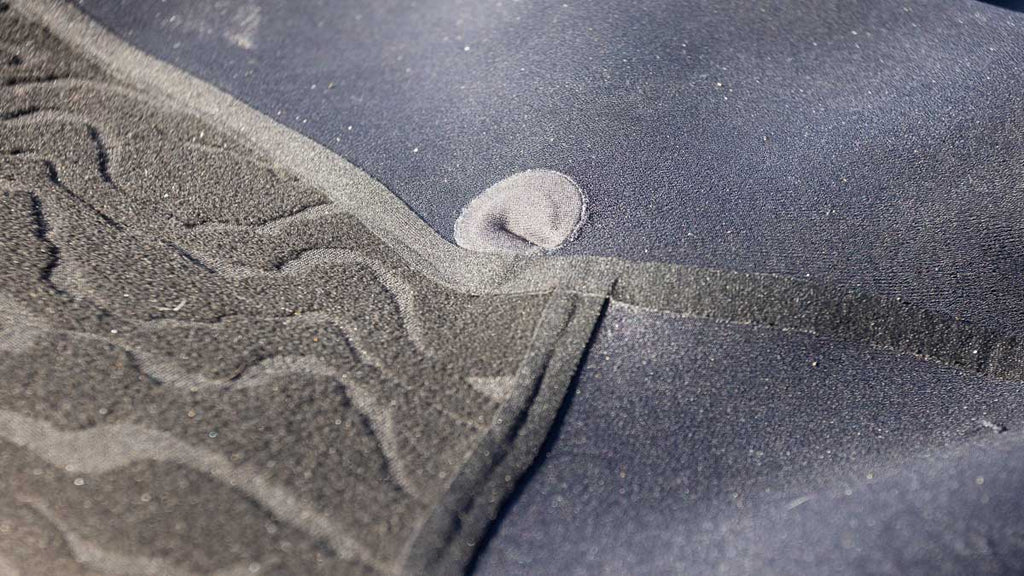
Seams and Stitching
One of the more obvious updates is the elimination of the outer seam seal that tended to crack and chip over time. Having forgone the seal, the interior seams are fully taped for reinforcement and to prevent any leaking. Several seams have also been moved and or removed altogether to reduce stress in high-stretch areas and increase overall flexibility.
Not exclusive to Patagonia is the use of AquaA Glue for lamination. AquaA is a solvent-free, water-based glue that does not contain VOCs (volatile organic compounds, aka chemicals) and is equally durable to its counterpart. The icing on the eco-cake is that it is all Fair Trade Certified sewn, a program that aims to provide factory workers livable wages.
Lastly, the supratex ankle cuffs are also a thing of the past: another attempt to reduce seams and make for easier entry.
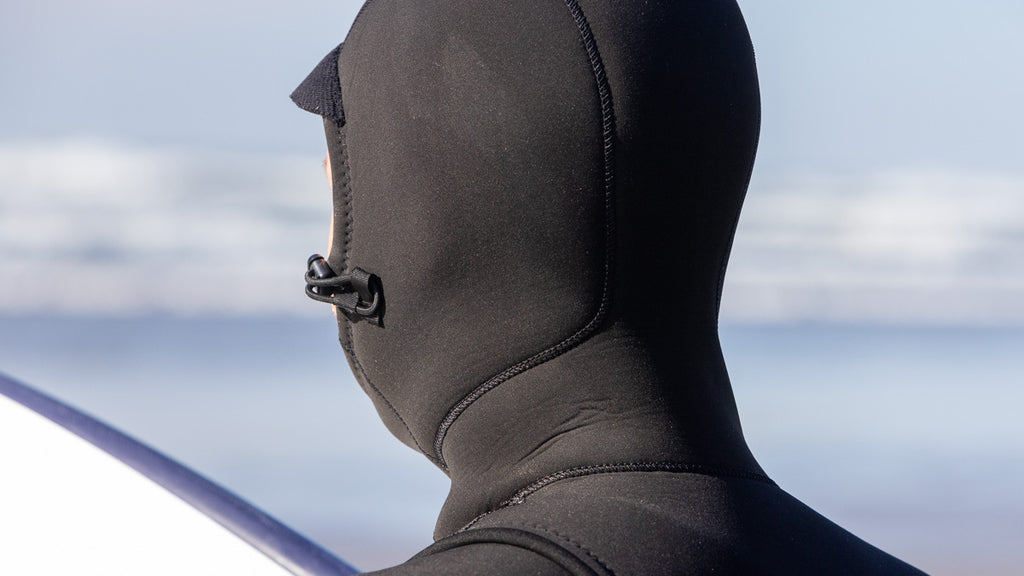
Fit and Cut
At roughly 6’1 and 190 lbs, I’m typically a size Large in almost any suit, regardless of brand. This is also true of the Patagonia Regulator. Although I am on the cusp of an XL, I fill the Large quite nicely. The new fabric and seam placement creates a more flexible and less restrictive suit, making it easier to get in and out of.
The water-tight hood fits well, cinches like a glove, and is lined with the Gerry Lopez camo for those extra cold or windy conditions. The updated ankle and wrist cuffs stay put and do not allow water to enter the suit, even when surfing without gloves or booties.
The Men’s models are available in sizes S-XXL with a few Short and Tall options, whereas the Women’s models are available in sizes 4-12. Hopefully, in the future, Short and Tall sizes will be options for the ladies as well.
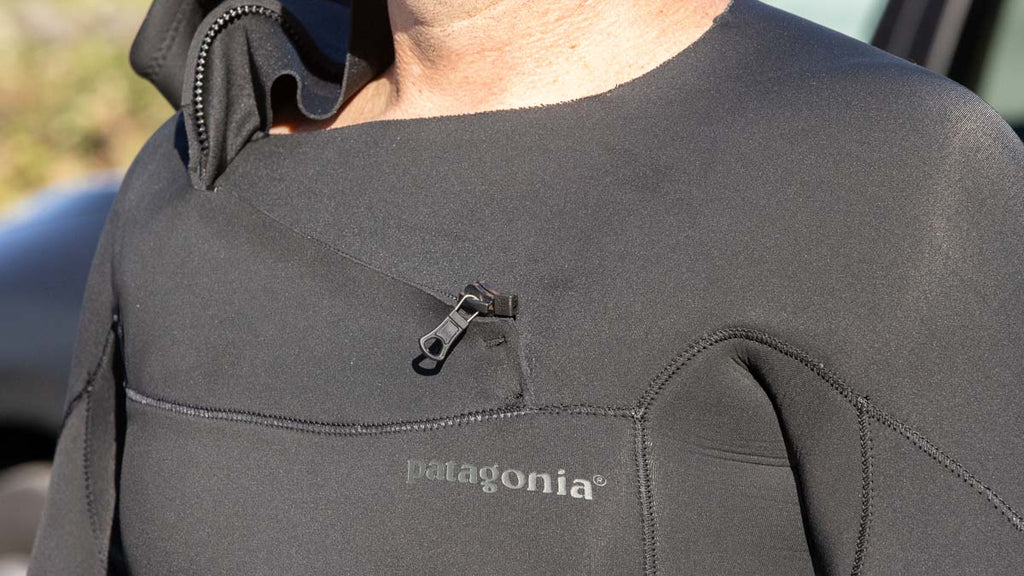
Entry and Zipper
The Regulator is offered in a non-hooded chest or back entry and a hooded chest zip model. Patagonia also swapped out the zippers for a non-corrosive one as a bonus.
A back zip entry is traditionally easier to get on and off due to the larger entry area. Because of this, first-time wetsuit buyers or folks with limited shoulder mobility often reach for the back zip option. Once the suit is on, a collar goes around your head and neck area, and a generous 18” leash is used to zip up the back. Attach the velcro to seal it all up; you’re ready to shred.
A slanted front/chest zip entry can often be difficult to navigate for a novice and tends to put a lot of stress on the “hinge” of the suit. Over time, this can cause the suit to rip prematurely, and depending on the wear and tear, you may end up repairing or replacing a suit more often than you may think necessary.
Fortunately, the chest entry point is stretchy enough that getting into and out of this suit is more manageable than many alternatives. The stress point on the “hinge” is also reinforced for added strength and peace of mind. I don’t feel the need to force the suit over my shoulders when entering and exiting. Pulling the hood over my head and then down past my shoulders doesn’t seem too labor-intensive. Even after a session lasting a few hours, I can still get out of the suit easily and without fear of damaging or ripping anything.

Performance
When I first put on the Regulator, I immediately noticed the improved flexibility and stretch. Stuffing a body into a small front entry can be tricky, and I felt that this suit didn’t require the extra pulls and tugs to get in place. Once on, you notice the subtle improvements in the lining and seam placement when stretching and maneuvering. Then the effects of the fuzzy camo liner kick in, and the next thing you know, you’re sweating before you’ve even touched the water. During my sessions, I experienced less fatigue when paddling as a result of the improved flexibility.
Here in the Pacific Northwest, where our water temperature generally hovers between 50-60 degrees Fahrenheit, I found the Regulator runs on the warmer side. That said, I tend to run hot and tested this suit when the outside temperature was likely between 55-70 degrees F, but I don’t foresee any issues with warmth heading into the Fall and Winter months. I wear a 4/3 year round, except for the coldest days, and will keep the R3 in rotation.
Overall, from the R1 (3/2.5) to the R5 (6.5/5), the Regulator’s got you covered for water temperatures ranging from a mind-numbing 32 F to a balmy 65+ F.
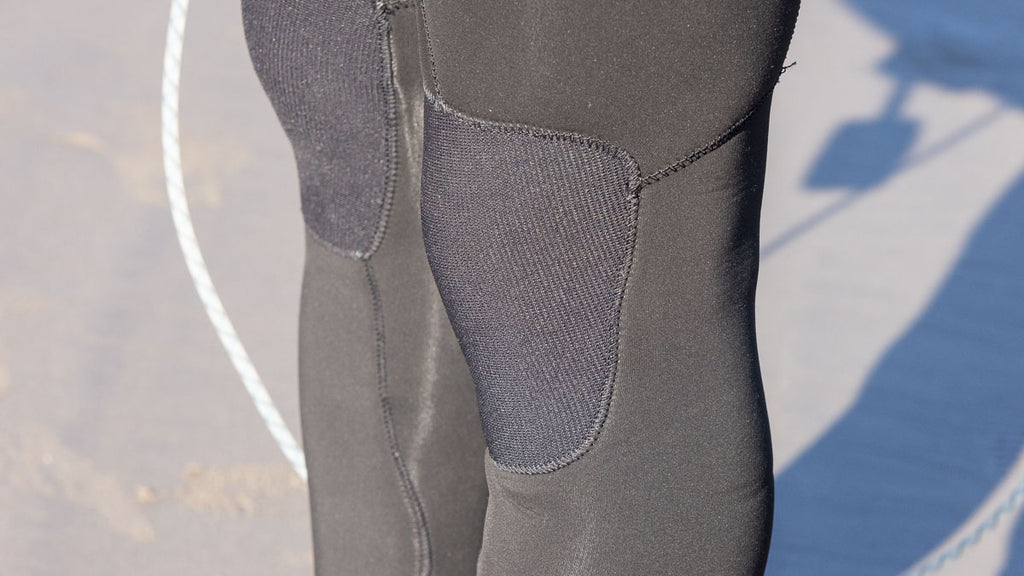
Value and Durability
The Patagonia Regulator model line rings a premium price of $479 for the R1 to $639 for the R5, making it one of our highest-priced options. While sticker shock may turn some away, you can find value in knowing that Patagonia suits last longer than comparable models and far surpass the life span of entry-level options. To borrow the phrase, “Buy it nice or buy it twice.”
Also, Patagonia remains one of the best companies to work with regarding warranty or repair issues with their Ironclad Guarantee. Once your suit has been worn beyond repair, Patagonia will take it back for recycling. Also, the environmental impact we have as surfers is tangible. Reducing our footprint with a neoprene-free suit is one of many ways we can help keep wetsuits out of landfills while ensuring the air and oceans are cleaner.
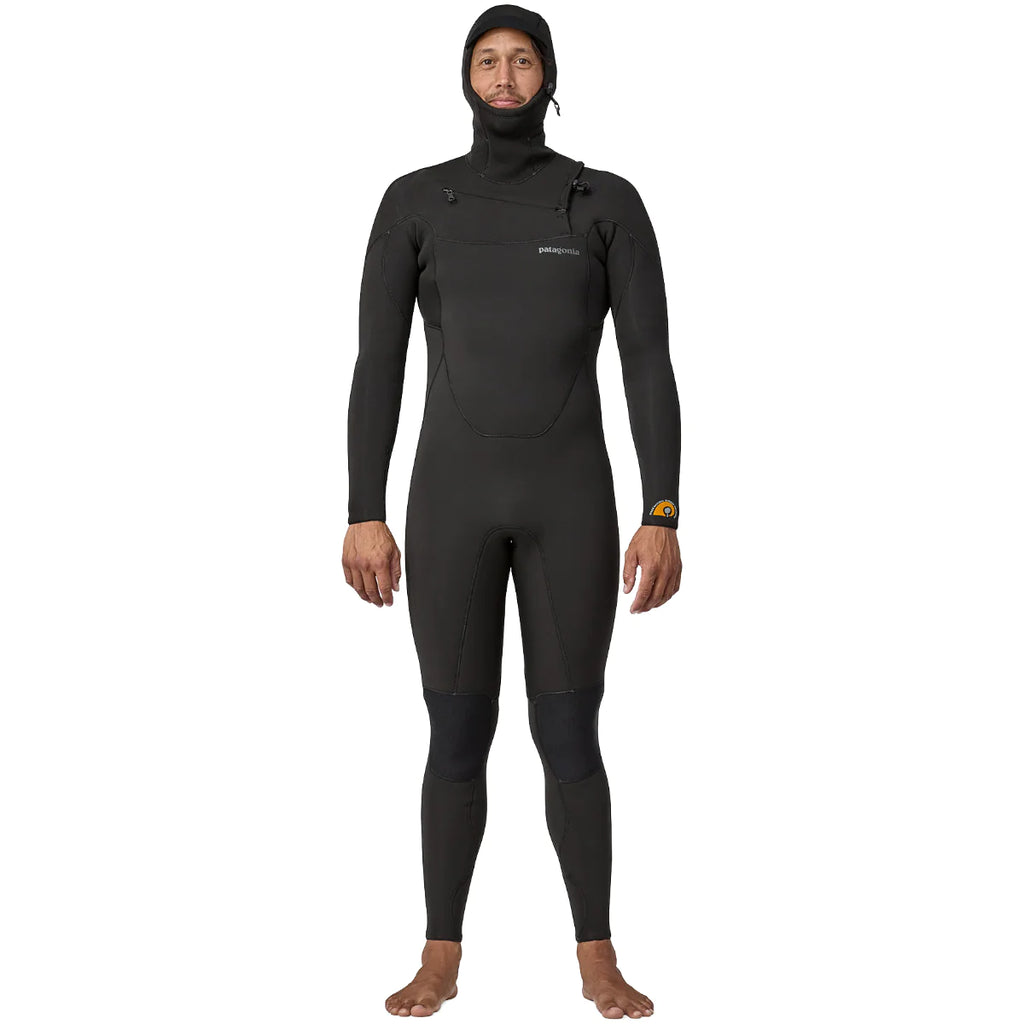
Staff Feedback
“The new Patagonia R3 Yulex Regulator is my go-to suit for daily sessions on the Oregon coast. I can easily get it on and off, which makes cold and rainy days not a problem! The 23/24 Yulex is more flexible and just as warm as the previous model, which puts Patagonia above the industry standard in my book. Bottom line: the Regulator is a warm, flexible suit backed with Patagonia's amazing warranty, ensuring it will last longer than any of my other wetsuits.”
- Michael
Review of the 2023 Patagonia Regulator Updates:
- Fabric: recycled nylon replaces formerly used recycled polyester.
- Seams: removed seams from high-stress areas on the backside and removed exterior seam seal.
- Interior Liner: loose weave knit is warmer, more flexible, and quick drying.
- Ankles: removed ankle cuffs for easier entry.
Final Thoughts
Simply put, there is no better suit on the market for the eco-conscious surfer. Recycled materials, natural Yulex rubber, solvent-free glue, and all the feels will keep you warmer than the Gerry Lopez black camo lining. The updated features are the new baseline for Patagonia moving forward, and it is easy to see why. Toss in the Ironclad warranty, and the Regulator rivals anything on the market.
As the demand for Yulex options grows, Patagonia's low environmental footprint standards remain unchanged. In September 2022, Yvon Chouinard, founder of Patagonia, announced that all future profits would go towards caring for our planet. Not only are you purchasing a high-quality suit, you’re also supporting Chouinard’s vision of protecting the oceans we seek out for surfing and play.
If you have any questions about the Patagonia Regulator or need sizing help, feel free to leave a comment, call us at 1-888-546-6176, or email support@cleanlinesurf.com. Enjoy the water!












